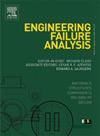超深井膨胀节活塞力致测试管柱屈曲破坏机理:实验、数值和设计优化方法
IF 4.4
2区 工程技术
Q1 ENGINEERING, MECHANICAL
引用次数: 0
摘要
在超深井测试作业中,复杂的机械环境容易导致伸缩节附近的管柱发生屈曲破坏,给作业安全带来重大风险。针对这一问题,本研究建立了井筒温度-压力场与管柱力学行为耦合分析模型,揭示了膨胀节部分拉伸状态下活塞力载荷的产生机理及其在管柱屈曲中的主导作用。以某超深井为例,量化了井口压力、泵压力、排量等参数对管柱屈曲风险的影响规律。并提出了一种新的伸缩缝设计方案。结果表明:当伸缩节处于部分拉伸状态时,内、外筒会产生高达368.94 kN的额外活塞力载荷,这是导致管柱失稳的主要原因;为缓解管柱塑性变形,提高井口环空压力、降低泵压、加大排量、减小伸缩节安装深度是有效措施。为解决传统膨胀节活塞受力过大的问题,基于力平衡原理设计了一种双压力腔膨胀节。实验验证表明,该设计可将活塞力载荷降低约50%。该研究为带膨胀节测试管柱的安全设计与优化提供了理论基础和技术解决方案,为超深层油气资源开发提供了重要见解。本文章由计算机程序翻译,如有差异,请以英文原文为准。
Buckling failure mechanism of testing tubing string induced by expansion joint piston force in ultra-deep wells: experimental, numerical and design optimization approaches
The complex mechanical environment during ultra-deep well testing operations easily induces buckling failure of the tubing string near the expansion joint, posing significant risks to operational safety. To address this issue, this study established a coupled wellbore temperature–pressure field and tubing string mechanical behavior analysis model, revealing the generation mechanism of piston force loads under the partially stretched state of the expansion joint and their dominant role in tubing string buckling. A case study of an ultra-deep well was used to quantify the influence patterns of parameters such as wellhead pressure, pump pressure, and displacement on tubing string buckling risk. Additionally, a new expansion joint design was proposed. The results indicate that when the expansion joint is in a partially stretched state, an additional piston force load of up to 368.94 kN is generated on the inner and outer cylinders, which is the primary cause of tubing string buckling failure. To mitigate plastic deformation of the tubing string, increasing wellhead annular pressure, reducing pump pressure, enhancing displacement, and decreasing the installation depth of the expansion joint are effective measures. To resolve the issue of excessive piston force in conventional expansion joints, a dual-pressure chamber expansion joint was designed based on force equilibrium principles. Experimental verification demonstrated that this design reduces piston force loads by approximately 50%. This study provides theoretical foundations and technical solutions for the safety design and optimization of testing tubing string with expansion joint, offering critical insights for the development of ultra-deep oil and gas resources.
求助全文
通过发布文献求助,成功后即可免费获取论文全文。
去求助
来源期刊

Engineering Failure Analysis
工程技术-材料科学:表征与测试
CiteScore
7.70
自引率
20.00%
发文量
956
审稿时长
47 days
期刊介绍:
Engineering Failure Analysis publishes research papers describing the analysis of engineering failures and related studies.
Papers relating to the structure, properties and behaviour of engineering materials are encouraged, particularly those which also involve the detailed application of materials parameters to problems in engineering structures, components and design. In addition to the area of materials engineering, the interacting fields of mechanical, manufacturing, aeronautical, civil, chemical, corrosion and design engineering are considered relevant. Activity should be directed at analysing engineering failures and carrying out research to help reduce the incidences of failures and to extend the operating horizons of engineering materials.
Emphasis is placed on the mechanical properties of materials and their behaviour when influenced by structure, process and environment. Metallic, polymeric, ceramic and natural materials are all included and the application of these materials to real engineering situations should be emphasised. The use of a case-study based approach is also encouraged.
Engineering Failure Analysis provides essential reference material and critical feedback into the design process thereby contributing to the prevention of engineering failures in the future. All submissions will be subject to peer review from leading experts in the field.
 求助内容:
求助内容: 应助结果提醒方式:
应助结果提醒方式:


